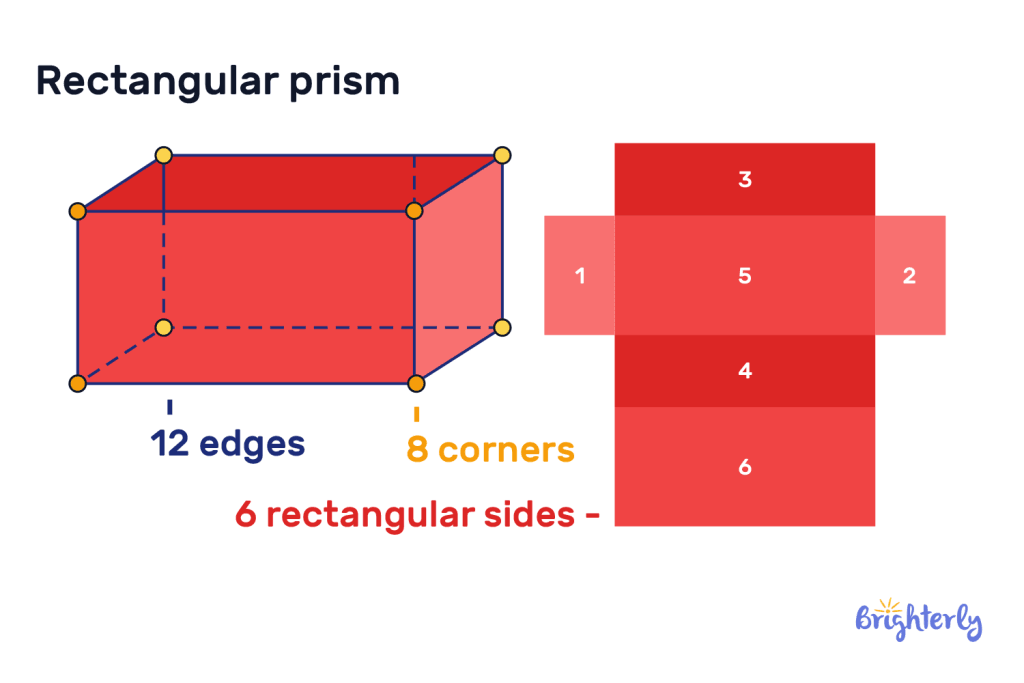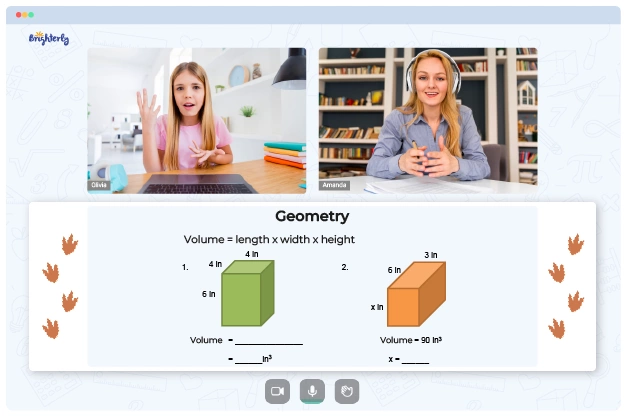Rectangular Prism – Definition With Examples
reviewed by Jo-ann Caballes
Updated on October 8, 2024
A prism is a three-dimensional mathematical shape with parallel bases and sides.
There are various kinds of prisms, but here we will be discussing rectangular prisms, their meaning, types, and so on.
What is a Rectangular Prism?
A rectangular prism is a three-dimensional shape with six surfaces; one on top, one at the base, and four side surfaces. Each of these faces is rectangular, hence its name Rectangular prism. It is also called a cuboid,
Rectangular prism: definition
The rectangular prism is a 3-dimensional shape, with 6 rectangular surfaces, 8 corners, and 12 edges.

How many sides does a rectangular prism have?
The rectangular prism has 6 sides. All of these sides are rectangular and the opposite sides are identical.
What does a rectangular prism look like?
As we mentioned earlier, a rectangular prism is a shape that has 6 rectangular faces. A notebook is a rectangular prism, so is a door, and a room.
Below are some other examples of rectangular prism shapes:
- Geometry box
- A fish tank
- A shoe box
- A cereal box
- Refrigerator
- Computer, etc.

Properties of a Rectangular Prism:
The following are some deciding variables that tell if a shape or item is a rectangular prism or not:
- To be a 3-dimensional shape, a rectangular prism has length, width, and height
- A rectangular prism has 6 sides, 8 vertices, and 12 edges.
- All surfaces are rectangular in shape
- All opposite surfaces are identical
How many vertices does a rectangular prism have?
There are 8 rectangular prism vertices. The vertices are the corners where the faces meet to form the shape.
Types of Rectangular Prisms
The rectangular prism can be of two types:
- Right rectangular prism
- Oblique rectangular prism

What is a right rectangular prism?
A right rectangular prism forms a right angle of 90° when it intersects at the base. All the sides are rectangular. It is the most common instance of rectangular prisms. A book is an example.
What is a non-right or oblique rectangular prism?
An oblique rectangular prism has diagonal side surfaces, which gives the prism a sideways appearance like a parallelogram. A window with a tilted design can be considered a non-right rectangular prism.
Formula for surface area and volume of a rectangular prism
The rectangular prism has 2 kinds of surface areas:
- Lateral surface area
- Total surface area
Lateral Surface Area
For this formula, we add the lateral side faces and exclude the top and base:
LSA = 2 (l × h) + (w × h)
LSA = 2 (lh + wh)
Total Surface Area
The total surface area, however, is calculated by adding the multiplied result of all the six surfaces (not just the lateral sides) :
TSA = 2 (width × length) + (width × height) +( length × height)
The formula for finding the total surface area can be shortened to:
TSA = 2 (wl + wh + lh)
Volume
The formula for finding the volume is the product of the length, height, and width of a rectangular prism:
V = l × h × w
V = lhw
Solved Maths Tasks: Examples
Solved math problem 1
What kind of rectangular prism has a width of 6 ft, a length of 5 ft, and a height of 7 ft that happens to be slanted?
Answer
| It is an oblique rectangular prism because it is slanted. |
Solved math problem 2
When a rectangular prism has the following characteristics:
Length = 8 feet
Height = 10 feet
Width = 9 feet
What is the total surface area and lateral surface area?
Answer
TSA = 2 (wl + wh + lh)
= 2 (9 × 8 + 9 × 10 + 8× 10)
= 2 (242)
| TSA = 484 ft2 |
LSA = 2 (lh + wh)
= 2 (8 × 10 + 9 × 10)
= 2 (170)
| LSA = 340 ft2 |
Solved math problem 3
Find the volume of a right rectangular prism when:
Length = 3.5 cm
Width = 7.5 cm
Height = 1.5 cm
Answer
V = l × h × w
V = 3.5 × 1.5 × 7.5
V = 39.37 cm3
| The Volume is 39.37 cm3 |
Rectangular Prism: Practice Math Problems
Rectangular Prism: worksheets
Learn more about prisms and geometry, generally with Brighterly’s free worksheets:
- Geometry worksheets
- Area of a triangle worksheet
- Parallel and perpendicular worksheets
- Rectangle worksheets






